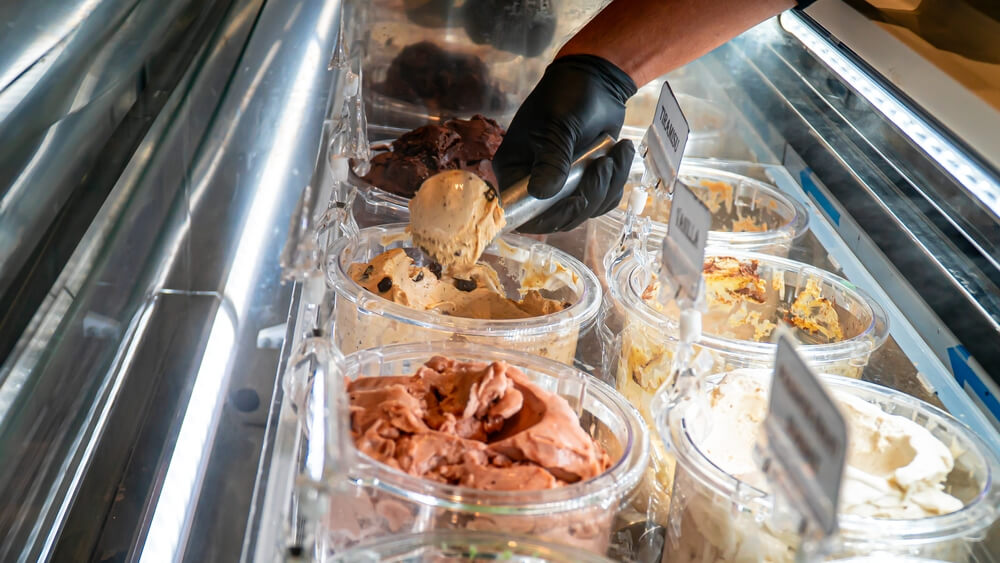What is Gelato? Exploring the Delicious World of Italian Ice Cream

Gelato, the Italian dessert, captivates taste buds globally. Its unique texture and flavor result from distinct ingredients and traditional methods. Explore gelato’s history, differences from ice cream in texture and dairy content, authentic artisanal processes, and popular flavors. Discover why this Italian treat enchants people worldwide.
What Is Gelato? A Unique Italian Dessert
Gelato, often hailed as a quintessential Italian dessert, offers a delightful twist on traditional ice cream. But what exactly is gelato, and how does it differ from the ice cream we’re familiar with? The term “gelato” itself is simply the Italian word for “ice cream,” but its preparation and texture set it apart.
Unlike typical American ice cream, gelato contains less air and more flavoring ingredients, resulting in a denser and richer taste experience. The gelato definition encompasses its unique composition: it is made with more milk than cream and generally contains fewer eggs (or no eggs at all), leading to a lower fat content compared to regular ice cream. This allows the flavors to shine through more intensely.
The meaning of gelato extends beyond its ingredients; it’s about tradition and craftsmanship. Italian artisans have perfected the art of creating this creamy delight over centuries, using fresh ingredients like fruit purees or nut pastes to achieve authentic flavors. When enjoying gelato, one is not just savoring a dessert but indulging in a piece of Italian culture that has been refined through time.
The History and Origins of Gelato
The history of gelato is as rich and flavorful as the dessert itself, tracing back to ancient times and evolving through centuries. The origins of Italian ice cream can be linked to the early Romans and Egyptians, who enjoyed frozen treats made from ice and snow brought down from mountaintops, sweetened with honey or fruit. However, it was during the Renaissance in Italy that gelato began to take on its modern form.
The credit for traditional gelato making often goes to Bernardo Buontalenti, a Florentine artist who is said to have delighted the court of Catherine de’ Medici in the 16th century with his creamy creations. Using milk, eggs, sugar, and a touch of wine or citrus fruits for flavoring, Buontalenti crafted what many consider one of the first true gelatos.
As time went on, gelato became an integral part of Italian culture. In Sicily during the 17th century, Francesco Procopio dei Coltelli opened one of Europe’s first cafes in Paris where he introduced his family’s recipe for this delightful dessert. This helped spread its popularity across Europe.
Traditional gelato making involves using fresh ingredients such as milk or water (for sorbetto), sugar, and natural flavorings like fruits or nuts. Unlike regular ice cream which contains more air due to churning at higher speeds, gelato is denser because it is churned at a slower pace. This results in a richer texture that melts more slowly on your tongue.
Today, in Italy, you can find artisanal gelaterias around every corner, offering countless flavors that reflect both innovation and tradition. Each scoop tells a story rooted deeply in its history while continuing to evolve with new tastes and techniques.
How Gelato Differs from Regular Ice Cream
When it comes to frozen desserts, the debate of gelato vs ice cream is a topic that piques the interest of many connoisseurs. Understanding the differences between gelato and ice cream can enhance your appreciation for both treats.
One of the primary distinctions lies in their texture. Gelato is renowned for its dense and creamy consistency, which sets it apart from the airier texture of regular ice cream. This difference in texture arises from how each is churned; gelato is churned at a slower speed, incorporating less air and resulting in a denser product.
Another key factor to consider is the dairy content in gelato compared to ice cream. Gelato typically contains more milk and less cream than traditional ice cream, contributing to its lower fat content. This variation not only affects mouthfeel but also allows flavors to appear more pronounced and intense.
In summary, while both gelato and regular ice cream offer delightful experiences, their differences in texture and dairy composition create unique tasting profiles that cater to diverse preferences. Whether you favor the rich density of gelato or the smooth richness of ice cream, understanding these nuances can elevate your next indulgence.
The Process and Ingredients Behind Authentic Gelato Making
Creating authentic gelato is an art form that combines meticulous technique with high-quality ingredients. The process begins with selecting the finest authentic gelato ingredients, which are pivotal to achieving the rich and creamy texture that distinguishes gelato from other frozen desserts. Traditional recipes often call for fresh milk, cream, sugar, and a variety of natural flavorings like vanilla beans or cocoa. Unlike commercial ice creams, authentic gelato contains less air and fat, resulting in a denser and more flavorful experience.
To embark on your homemade Italian ice cream recipe journey, start by heating the milk and cream gently while gradually incorporating sugar until it dissolves completely. This mixture forms the base of your gelato. Once cooled, add your chosen flavors, whether it’s pistachio paste for a nutty delight or ripe strawberries for a fruity burst.
The artisanal gelateria process involves slow churning at lower speeds compared to regular ice cream making. This method not only incorporates less air but also ensures a smoother consistency. The final step is to freeze the mixture slowly while stirring occasionally to maintain its creamy texture.
Understanding how to make gelato using these traditional methods not only enhances your appreciation for this Italian delicacy but also empowers you to create an exquisite treat right in your kitchen. Whether you’re crafting classic flavors or experimenting with new ones, mastering these techniques will bring the essence of Italy’s beloved dessert into every scoop.
Popular Flavors and Variations of Gelato You Must Try
When it comes to indulging in a delightful Italian dessert, gelato stands out as a beloved choice for many. Known for its creamy texture and intense flavor, gelato offers a diverse array of tastes that cater to every palate. Here’s a gelato flavors list highlighting some popular Italian dessert flavors you absolutely must try.
First on the list is the classic Chocolate Hazelnut Gianduja, a rich and velvety blend that combines the deep notes of chocolate with the nutty essence of hazelnuts. This flavor is reminiscent of Italy’s famous gianduja chocolate, offering an indulgent experience that’s hard to resist.
For those who prefer something refreshing, Fruit Flavored Gelatos are an excellent choice. These vibrant options include zesty lemon, sweet strawberry, and juicy mango, each capturing the essence of fresh fruits in every scoop. These fruit flavors not only provide a burst of natural sweetness but also serve as a lighter alternative to creamier options.
Another must-try is Pistachio, celebrated for its distinct nutty taste and smooth texture. Made from high-quality pistachios, this flavor embodies authenticity and richness that true gelato aficionados will appreciate.
Lastly, don’t miss out on trying Stracciatella, which features delicate ribbons of chocolate folded into creamy vanilla gelato. This flavor offers a delightful contrast between smoothness and crunchiness with each bite.
Exploring these popular Italian dessert flavors will surely enhance your appreciation for this iconic treat. Whether you’re drawn to fruity freshness or decadent chocolatey goodness, there’s always a perfect gelato waiting just for you.
The Global Rise and Cultural Significance of Gelaterias
Gelaterias have become a beloved cultural phenomenon worldwide, transcending their Italian origins to captivate taste buds across the globe. This rise is attributed not only to the irresistible allure of artisan ice creams but also to the cultural significance they hold in various communities. These establishments are more than just places to indulge in sweet treats; they are social hubs that foster community interaction and celebration.
The global rise of artisan ice creams has been fueled by an increasing demand for authentic and unique flavors. Gelaterias pride themselves on using high-quality, natural ingredients and traditional methods, which resonate with consumers seeking genuine culinary experiences. This emphasis on authenticity has led to a proliferation of gelateria culture worldwide, where local adaptations meet classic Italian techniques.
Angelica’s, among other famous global chains, plays a pivotal role in this cultural exchange by serving authentic tastes that honor their roots while embracing local flavors. These establishments often become landmarks within cities, drawing both locals and tourists eager to experience the rich tapestry of tastes they offer.
Gelaterias serve as cultural ambassadors, bridging different traditions through the universal language of flavor. They celebrate diversity while maintaining a commitment to quality and traditional, a testament to their enduring appeal in an ever-globalizing world.
Discover the Exquisite Taste Experience with Every Scoop gelato
In conclusion, Indulging in gelato offers an exquisite taste experience. Each flavor reflects dedication, using fresh ingredients and traditional techniques for rich texture. Its denser consistency and intense flavors come from lower air content and higher natural ingredients. The creamy smoothness balances sweetness and depth. Whether vanilla bean or pistachio, each scoop promises an authentic Italian experience beyond ordinary desserts, satisfying your culinary curiosity.

